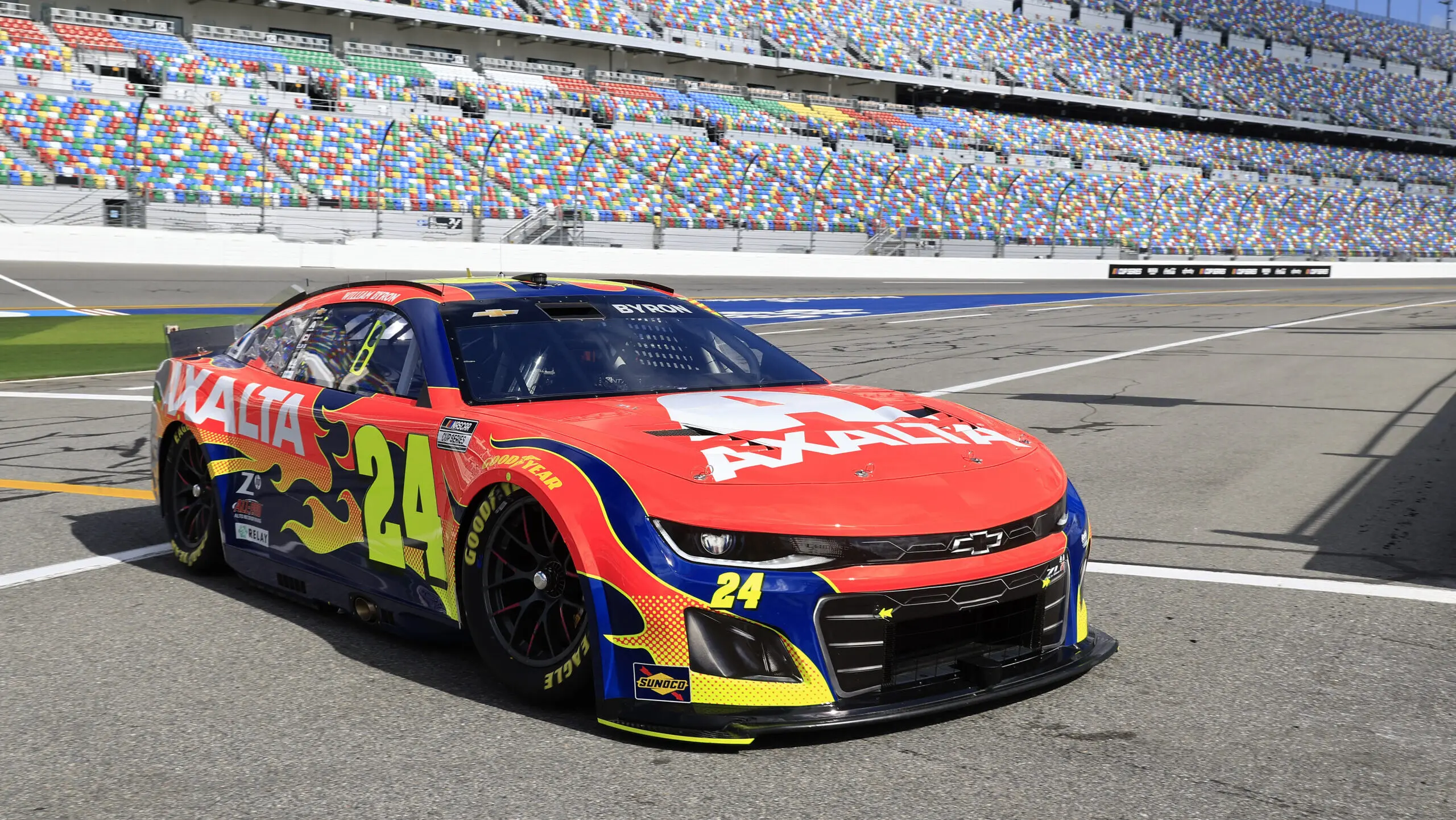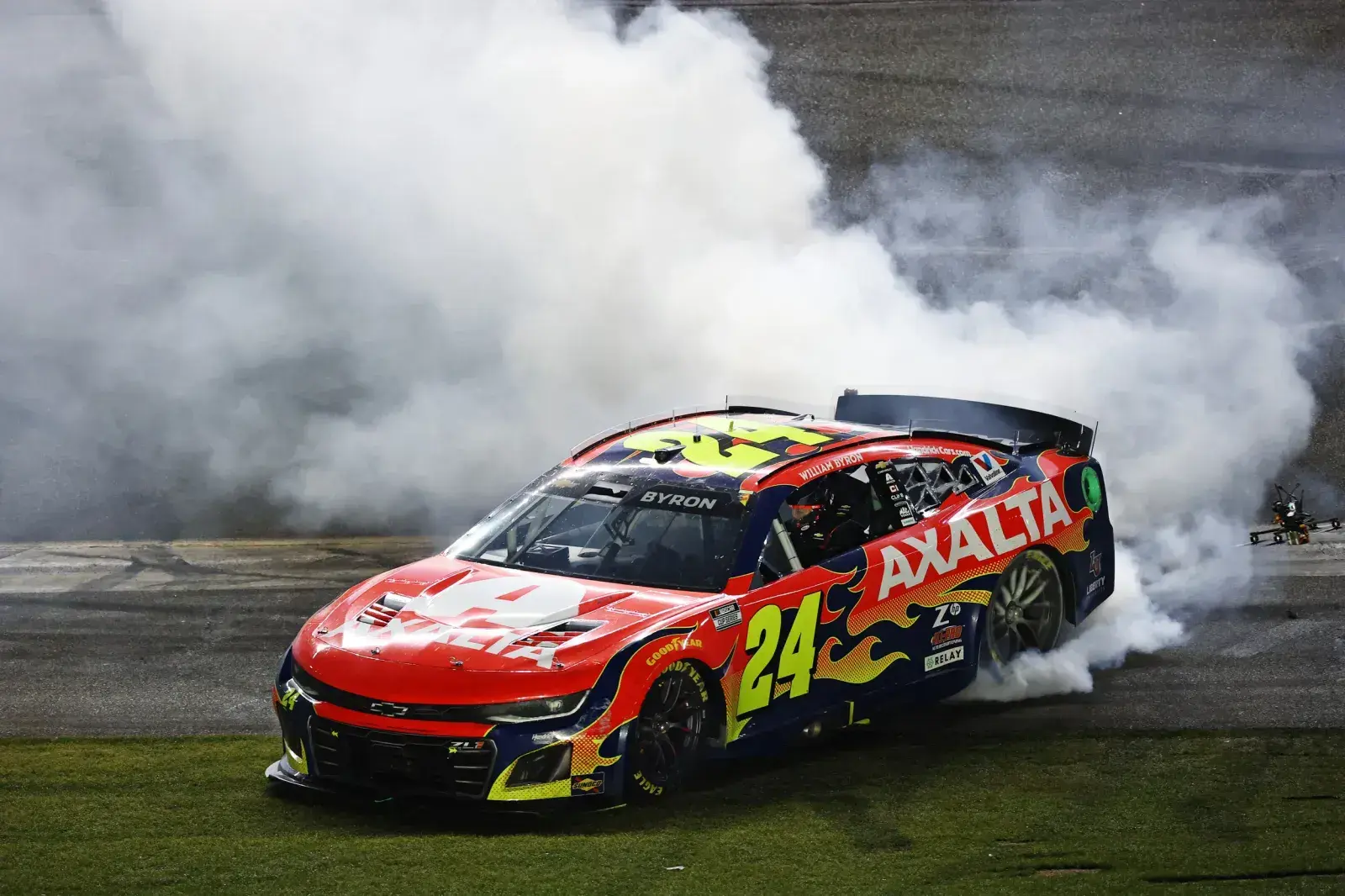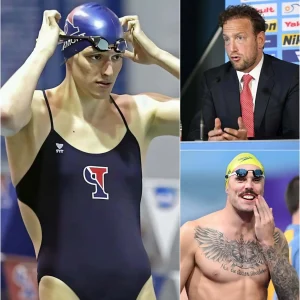William Byron has been thrust into the spotlight after being accused of cheating at Martinsville Speedway, one of NASCAR’s most competitive tracks. Following the race, several rival drivers filed complaints alleging that Byron’s car had unfair advantages. According to these claims, certain modifications in his vehicle may have breached NASCAR’s technical regulations. The governing body responded quickly, conducting a thorough inspection of Byron’s car. The results of this inspection revealed potential irregularities in the engine, raising questions about the legitimacy of his performance during the race.

Eyewitnesses at Martinsville reported that rival drivers were visibly frustrated after the race, claiming that Byron had gained a suspiciously fast lap time. Social media exploded with speculation as fans debated the fairness of the results. Some drivers reportedly approached NASCAR officials privately to voice their concerns, insisting that Byron’s car exhibited unusual power and acceleration patterns. The complaints prompted NASCAR to act immediately, ensuring transparency and fairness while investigating the situation thoroughly before making any official statements.
The inspection of Byron’s car focused on the engine, fuel system, and aerodynamics, all key factors that could affect race performance. NASCAR officials reportedly discovered subtle discrepancies that suggested Byron’s car may have exceeded allowed performance limits. While the findings have not yet resulted in penalties, they have generated intense discussion among fans and commentators alike. Many are now questioning whether Byron’s competitive edge was entirely due to skill or partially due to unauthorized modifications.
Some rival drivers have remained anonymous but hinted at potential motives for Byron to push boundaries. They argue that Martinsville’s short track layout amplifies even small advantages, giving certain drivers a disproportionate benefit. According to insiders, complaints centered on engine output and torque levels, suggesting Byron may have optimized his car beyond what is permitted. This sparked heated debates on forums and fan communities, with enthusiasts analyzing lap times, pit strategies, and telemetry data to try to uncover any evidence supporting the allegations.

While the investigation is ongoing, Byron himself has denied any wrongdoing, claiming that all adjustments made to his vehicle were within NASCAR’s rules. He maintains that his performance was based solely on driving skill and team strategy. Despite these assurances, the shadow of doubt cast by rival complaints has fueled speculation. NASCAR has promised a detailed report, but until official results are released, the controversy surrounding Byron and his car continues to dominate headlines and social media conversations.

Experts in motorsport engineering have weighed in on the situation, noting that minor engine tweaks can have significant impacts on performance. Even small deviations from regulations can result in faster lap times or improved acceleration. Analysts have pointed out that the alleged modifications in Byron’s car could have provided subtle advantages without being immediately obvious during standard inspections. This technical insight has intensified scrutiny and increased pressure on NASCAR to ensure that all vehicles meet strict compliance standards.
Fan reactions have been particularly intense, with many taking sides on social media. Supporters of Byron argue that allegations are a result of envy from rival drivers, claiming his victory was earned through skill and determination. Meanwhile, critics insist that NASCAR must investigate thoroughly to maintain fairness. Hashtags related to the controversy have trended across multiple platforms, showing the high level of public interest. Memes, videos, and opinion pieces continue to flood the internet as the story gains traction.

The controversy has also raised questions about NASCAR’s enforcement procedures. Some fans and insiders argue that inspections should be more frequent and stringent, particularly after races with unexpected results. Byron’s situation has sparked discussions about transparency and accountability, with calls for NASCAR to release detailed technical reports to the public. Industry insiders suggest that resolving the controversy promptly is crucial for maintaining trust among drivers, teams, and fans, ensuring that competitive integrity remains a cornerstone of the sport.
As the investigation continues, rival drivers are expected to monitor every step closely. Some have indicated that they will continue filing complaints if additional irregularities are found. This ongoing tension adds drama to the racing season, as fans and teams alike watch for official decisions from NASCAR. Analysts predict that the outcome of this case could influence the rules and inspection processes for future races, setting a precedent for how suspected technical violations are handled at the highest levels of the sport.

Ultimately, the William Byron controversy at Martinsville Speedway highlights the complex interplay of skill, technology, and regulation in modern NASCAR. Complaints from rival drivers, combined with the preliminary inspection results, have created a story that captivates the motorsport community. Whether Byron is ultimately cleared or penalized, this incident will be remembered as a defining moment in the season. Fans continue to debate, speculate, and follow updates closely, proving that NASCAR’s competitive drama extends far beyond the track itself.






